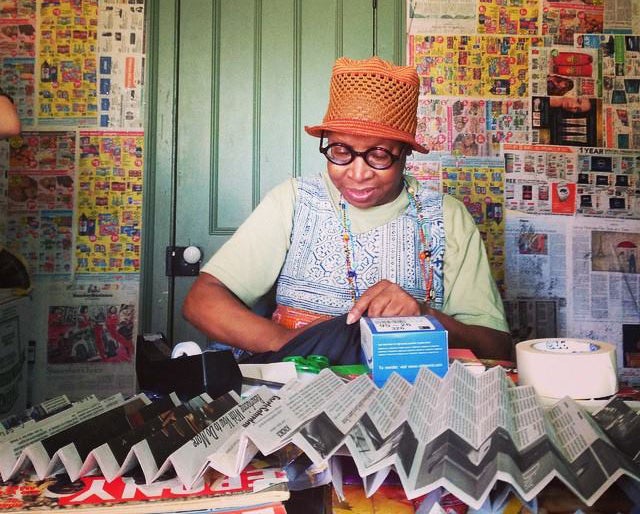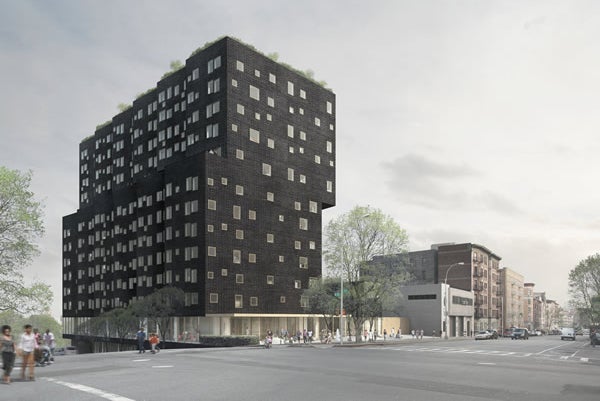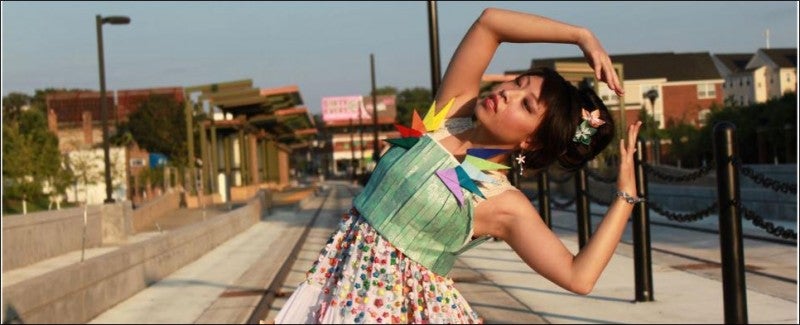Above, watch the full conversation about creative placemaking, featuring former National Endowment for the Arts Chairman Rocco Landesman and ArtPlace America Executive Director Jamie Bennett, and moderated by Aspen Institute Arts Program Director Damian Woetzel.
Type “creative placemaking” into Microsoft Word and it will suggest that perhaps what you mean is “creative platemaking,” or “creative peacemaking,” or possibly even “creative lacemaking.” But during a recent Aspen Institute Arts Program in New York event on the topic, former National Endowment for the Arts (NEA) Chairman and Broadway producer Rocco Landesman, along with ArtPlace America Executive Director Jamie Bennett, discussed the origins of the phrase with Arts Program Director Damian Woetzel and assured the audience that the word is indeed “placemaking.”
The story of creative placemaking begins with the birth of ArtPlace America. Landesman, a successful Broadway producer, makes the unlikely pitch of himself as chairman for the NEA in 2009 and gets the job. Once presiding over the NEA, Landesman is determined to show that fundraising for the arts doesn’t have to be an act of begging but rather one of receiving payment for vital services — that the arts are as important a part of community development as anything else.

Artist Xenobia Bailey puts the finishing touches on her installation at the Weeksville Heritage Center in Brooklyn, New York. (Photo Credit: ArtPlace America)
As part of Landesman’s efforts he convinces 10 of the country’s biggest philanthropic organizations, six of the world’s biggest banks, and five federal agencies to devote time, money, and resources to help him prove his point. Everyone agrees with him, and they promise to provide $23 million and serious operational support for something called ArtPlace, which will furnish Landesman’s proof by promoting and growing a practice that most of those who have agreed to support it probably can’t even define — creative placemaking.
The evidence of its success need not rest on spellcheck. In the past few months, if you traveled to Mount Rainer, MD; Springfield, MO; Pittsburgh, PA; Loveland, CO; Camden, NJ; or Governor’s Island, NY, you could find a public arts festival or celebration that received funding from ArtPlace America. The organization, whose grants average $330,000, works with communities of virtually every size on a variety of projects: decorating a disrupted public-construction zone with community art to bring residents back to neglected local businesses, establishing cultural centers or museums where there were none, or breathing life back into struggling neighborhoods by providing artists housing and exhibition spaces.

Architectural rendering of Broadway Housing Communities’ Sugar Hill development in New York City. (Photo Credit: ArtPlace America)
Supporters haven’t been slow to recognize the value of these projects. Since ArtPlace was first announced in 2011, its list of contributing foundations has grown to 12, and its budget has grown to accommodate a total $56.8 million in grants across 189 projects, including $14.7 million just this year alone. On the other side of the equation, ArtPlace received 1,300 grant applications last year and was only able to approve 4 percent of them; this year, two weeks before the application deadline, Bennett explained, it had already received over 2,000 applications.
ArtPlace has helped creative placemaking in just a few short years grow from an unfamiliar phrase to an accepted field. Supporting proof on that score was offered by students from the New School, who were part of a private student roundtable discussion prior to the public event, and who informed Landesman that they came from a creative placemaking class at the New School, the first he had ever heard of it.
Bennett, who prior to taking the helm at ArtPlace was chief of staff to Landesman at the NEA, explained that while it is not necessary for every arts organization to work on creative placemaking, he does believe that every community needs to make use of it. When civic leaders sit down to discuss community development, his hope is that along with transportation, sanitation, parks and recreation, or education, the arts will have a place at the table. And its inclusion shouldn’t be novel; it should be normal.

Supported by Irrigate Arts, Artists Yang Mee-Moua Yang and Nonmala Xiong, in partnership with the Center for Hmong Arts and Talent (CHAT), led a fashion exhibit featuring the innovative use of unconventional materials found around St. Paul, MN’s green-line light rail path. (Photo Credit: Springboard for the Arts)
Not every city has a waterfront, a baseball park, or a civic center to help drive development, but every community — whether it’s Cincinnati, Ohio; Santo Domingo Pueblo, New Mexico; Charleston, South Carolina; or Brooklyn, New York — has artists. Bennett and Landesman both agreed that in their experience, mayors have never demonstrated difficulty understanding this — they have seen firsthand what artists do to drive a community’s social, economic, and physical futures; it is a matter of translating that understanding to the broader range of private funders and public institutions who help drive development.
“The fact that you’re in this room means I don’t need to talk to you,” Bennett told the audience. He said that reaching the broader field will be one of his biggest focuses for the remainder of his tenure at ArtPlace (whose lifespan is finite; ArtPlace is designed to sunset in 2020). A big part of Bennett’s job in his mind is getting invited to discussions of community development where the arts aren’t being included. But his highest achievement will come, he said, when placemaking is no longer a word that gets red-lined by Microsoft.
Aidan Flax-Clark is senior project manager of the Aspen Institute Arts Program.

